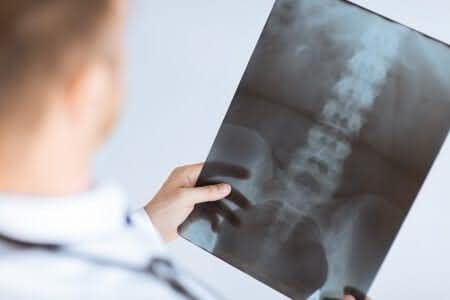This case involves a male patient in Hawaii who was prompted to seek medical attention for severe and sudden back pain. He indicated to the internist who saw him that the pain began in his lower spine and was radiating down the back of his left leg. The physician diagnosed him with a likely spinal issue related to a bulging disk, and prescribed muscle relaxants as well as painkillers and, after an MRI was administered, was discharged him home. Over the course of the next few days, the patient was not given any updates on the status of his MRIs, despite repeated calls to the hospital. On the fifth day, the patient received a call from the hospital and was told to go to the nearest emergency room for immediate treatment. On arrival, the patient listed his complaints as radiating pain in his back which had grown progressively worse, as well as incontinence, numbness, and the inability to lay down comfortably. An MRI demonstrated that the patient was suffering from multilevel disk and joint disease, and was eventually diagnosed with cauda equina syndrome and herniated disc disease.
Question(s) For Expert Witness
1. What are the signs of cauda equina syndrome and herniated disc disease?
2. In general, if cauda equina syndrome and herniated disc disease are suspected, how quickly should the patient's care be elevated to the proper specialist?
Expert Witness Response E-076929
This is an unfortunate case. The MD was correct that a disc herniation was almost certainly the cause. However, sensation around the perineum (including the sense to urinate) usually indicates that a disc is protruding against the very end of the spinal cord, called the cauda equina. Given the amount of space a lesion such as this needs to impinge on the cauda, it often reflects a severe acute narrowing of the spine and can lead to permanent neurologic deficits which can include long-term complications such as urinary, fecal incontinence and anesthesia over the genitals. This case fits the definition. If cauda equina syndrome is suspected, the patient should undergo an MRI within hours in most circumstances, though delays up to a day are semi-acceptable depending upon MRI accessibility. In the interim, the standard of care would be to initiate steroids to decrease inflammation while an MRI was pursued. However, the treatment of cauda equina is surgical. It is considered a medical emergency.
About the author
Joseph O'Neill
Joe has extensive experience in online journalism and technical writing across a range of legal topics, including personal injury, meidcal malpractice, mass torts, consumer litigation, commercial litigation, and more. Joe spent close to six years working at Expert Institute, finishing up his role here as Director of Marketing. He has considerable knowledge across an array of legal topics pertaining to expert witnesses. Currently, Joe servces as Owner and Demand Generation Consultant at LightSail Consulting.



